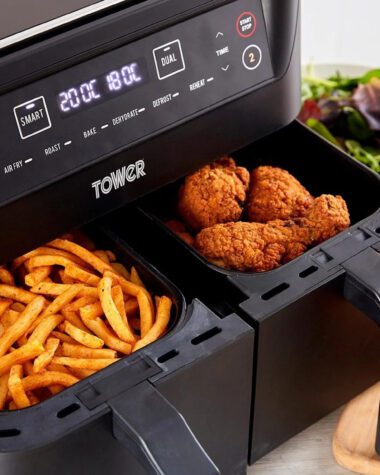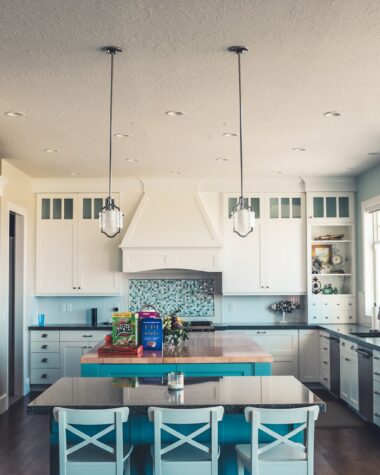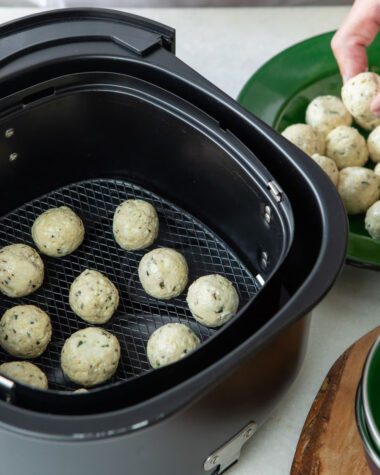Do you need a new 30-inch refrigerator for your kitchen? Is it time to say goodbye to your old cooling partner in crime? Regardless of what you look for or need in a fridge, purchasing a new one is usually based on functionality, features, and if your new under-counter appliance will match visually with your kitchen decor.
There are a few refrigerator options to select and navigate all the brands available online, and their setups can be challenging. Understanding the characteristics of each available fridge model could be essential information as you research and start shopping for a new appliance.
We’ve spent some time here at DaDongNY analyzing different sorts of refrigerators, refrigerator brands, and even tiny fridge models, but what about installation type? Counter-depth refrigerators are the most often utilized in family kitchens. The location where you want to place your refrigerator might impact your buying decision and the appearance you want to create, so we’ll go over all you need to learn regarding counter-depth refrigerators to assist you in choosing the ideal refrigerator for your household.
Counter-Depth Refrigerators
This refrigerator is taller than a standard-depth refrigerator. It is designed to save kitchen space and fit with surrounding cabinetry and countertops. A counter-depth refrigerator usually provides a similar capacity to a full-size fridge, but they do not extend beyond the cabinets and block your pathway in the kitchen.
Counter-depth refrigerators are shallower than standard-depth refrigerators to fit into a kitchen, with an average range of 23 to 27 inches deep. On the other hand, most full-size standard-depth refrigerators are deeper than 30 inches, typically in the 35- to 36-inch range. A traditional refrigerator may extend more than six inches from the countertop’s edge.
How does the counter-depth refrigerator affect your kitchen? Adding them to your kitchen will give you a neat look you’ve been looking for while also providing you with the same amount of space for storage. With a flush installation, you can ease traffic and disruptions in your kitchen, which is beneficial if you have more than one person cooking.
Here are a few of our favorite counter-depth refrigerators from well-known brands:
- Whirlpool 19.4 Cu. Ft. 4-Door French Door Counter-Depth Refrigerator With Flexible Organization Spaces
- LG 26.5 Cu. Ft. French Door Counter-Depth Smart Refrigerator With Internal Water And Ice
- Samsung 17.5 Cu. Ft. Counter Depth 3-Door French Door Refrigerator With Wifi And Twin Cooling Plus®
- GE 21.8 Cu. Ft. Side-By-Side Counter-Depth Refrigerator
Pros And Cons Of Counter-Depth Refrigerators
If you’re considering buying a counter-depth refrigerator, here are some pros and cons.
Pros
- The design of most counter-depth refrigerators is visually appealing. They offer a minimalist appearance comparable to that of a built-in fridge without the cost of a built-in one.
- Five or six inches may not seem like much. But when it comes to your kitchen space, those extra inches could still make an effect. A counter-depth refrigerator will offer more flexibility to you and your family, especially if your fridge is in a high-traffic area of your kitchen.
- Because a counter-depth refrigerator is less deep inside than a standard one, it’s easier to access what’s within your refrigerator without moving milk bottles or salad dressings. When you can see the items you have on hand, you’re less likely to forget about items at the back, only to have the food rot and wasted.
Cons
- Counter-depth refrigerators have less food storage space than regular ones since they are shallower. Typical fridge and freezer combinations for counter-depth refrigerators have 22 to 31 cubic feet of space, while standard fridges have 20 to 23 cubic feet.
- Although it’s possible to see inside more clearly, the shallow depth means there isn’t enough room for large objects like a wine bottle or an entire watermelon. The produce section is also smaller.
- If you plan kitchen remodeling, a counter-depth refrigerator may only fit your current fridge space. Counter-depth refrigerators are wider to compensate for some depth loss. A standard refrigerator is usually 30 to 36 inches wide, while a counter-depth refrigerator is at least 36 inches wide. They’re also taller, around 70 inches, instead of 67 to 70 inches for regular ones.
Different Styles Of Counter-Depth Refrigerators
Counter-depth refrigerators are classified into four types: French door, side-by-side, top-freezer, and bottom-freezer. Here’s how they differ:
- French Door Counter-Depth Refrigerator
A French-door refrigerator features two doors on top and drawers donning on the bottom. The French doors swing open to reveal a single large refrigerator compartment within. Compared to a single door on a typical top-freezer refrigerator, opening and shutting the doors on a French door fridge requires less clearance.
- Side-by-Side Counter-Depth Refrigerator
A side-by-side refrigerator features two doors extending the entire fridge height. The refrigerator is located on one side, while the freezer is on the opposite and narrower side. Narrower doors on certain side-by-side freezers help optimize rooms in smaller kitchens.
- Top-Freezer Counter-Depth Refrigerator
The top-freezer refrigerator is a more classic look, with a freezer on top and a refrigerator below. The refrigerator and freezer doors could be opened to the right or left, depending on the model.
- Bottom Freezer Counter-Depth Refrigerator
Bottom-freezer refrigerators have a fridge on top, and a freezer drawer, on the other hand, is on the bottom of the appliance. In this regard, it is comparable to a French door type. However, it only has one refrigerator door rather than two. Furthermore, depending on the model, the door could be opened to the right or left.
How to Take Counter-Depth Refrigerator Measurements
When purchasing a counter-depth refrigerator, thoroughly measure your kitchen area to discover the best fit. Use the guidelines below to get precise measurements for your refrigerator:
- Depth
Begin your measurement at the bottom of your countertop. The counter-depth measurement should be between 24 and 25 inches. Leave an inch or two between the refrigerator’s rear panel and the wall for optimal fridge ventilation.
Review the depth dimensions for counter-depth models before purchasing, including the depth with the doors and drawers open. If you have a kitchen island, ensure the refrigerator doors and drawers will open without hitting something.
- Width
Begin by determining a measurement of the width of your cabinet. Deduct an inch from your width measurement for an inch or two of space on either side of the refrigerator for optimal ventilation.
If one side of your refrigerator is against a wall, leave at least 2 ½ inches between the wall and the side of the door to allow the fridge to open easily. If you already have a standard refrigerator, on the other hand, your new counter-depth refrigerator will be a little wider. Counter-depth refrigerators are usually wider than standard refrigerators to compensate for their shallow depth.
- Height
Begin by trying to measure from the ground toward the bottom of the cabinets that will be placed above the refrigerator. Afterward, ensure sufficient ventilation for the fridge by deducting an inch or two from your measurement.
Once you’ve determined the width, height, and depth measurements, you can choose a counter-depth refrigerator that fits your kitchen and has the needed features.
Five Tips To Keep Your Counter-Depth Refrigerator In Excellent Condition
Refrigerator is probably the most utilized appliance and the biggest energy consumer in every household’s kitchen. It is essential that you maintain your counter-depth refrigerator clean and in good working condition in order to reduce energy usage and keep it operational for a good period of time.
Here Are The Following Tips On Maintaining Your Counter-Depth Refrigerator:
- Examine The Seals On The Doors
Check the door seals to guarantee they are secure and free of any kinds of food debris. Wipe the seals once a year using a toothbrush with a baking soda and water solution.
If cold air leaks out, energy is wasted, and the fridge has to work more than it already has to. To ensure that your seals are in good shape, place a dollar bill in the door and close it halfway. If it falls out easily, get the seals inspected and repaired by a specialist.
- Maintain Coil Condition
Condenser coils serve as devices that extract heat from the inside of the counter-depth fridge and transfer it into the surrounding atmosphere. If these coils become dirty, your refrigerator will not function efficiently. It’s necessary to clean coils twice every year by pushing the machine away from the wall and disconnecting the refrigerator to wipe all the dirt with a brush.
- Clean Your Fridge’s Interior Compartments
Cleaning the refrigerator’s shelves, doors, and walls regularly will help hold germs and bacteria at bay. If something spilled inside the fridge, wipe it up as soon as possible. It’s also a good idea to declutter out your counter-depth refrigerator so you don’t prevent foods from being outdated or moldy.
- Inspect The Temperature
Check if the temperature in your counter-depth refrigerator is anywhere between 37 and 38 °F, and that the temperature in your freezer compartment is 0 °. Being able to monitor the inside temperature enables the refrigerator to perform optimally.
- Keep It Stocked
Refrigerators require thermal mass to achieve the low temperatures necessary for keeping both food and beverages chilled. Whenever the refrigerator doors are opened, cold food and beverages absorb the heated air, causing your counter-depth fridge to work excessively that it would normally do. If your refrigerator is empty, load it with bottles and cans to help with thermal mass.
FAQs
- What Is The Price Of A Counter-Depth Refrigerator?
Are counter-depth refrigerators more expensive than their conventional counterparts? Perhaps. It’s hard to compare the prices of counter-depth to normal refrigerators, especially since so many newer counter-depth models have additional features like smart technology.
A standard-size Whirlpool 19.4 Cu. Ft. 4-Door French Door Counter-Depth Refrigerator with Flexible Organization Spaces from Best Buy costs about $1,599. We also noticed that counter-depth models without extra features and parts are more reasonably affordable than standard-depth models.
- Who Should Think About Buying A Counter-Depth Refrigerator?
A counter-depth refrigerator is ideal for your family, particularly if you are:
- You’re rebuilding your kitchen or have an existing area, and you want a more minimal look;
- Your refrigerator location is a heavily traveled spot;
- And you only have a small family and don’t need the extra food storage capacity.
Bottomline
When it comes to garage-ready refrigerators, the possibilities are limitless. The counter-depth refrigerator options are nearly endless if you research all the necessary information and thoroughly assess the area in your kitchen.
A counter-depth refrigerator is unquestionably more aesthetically appealing, and their fridge models are all strong contenders because you’ll love all of them. With this post, this guide has helped you determine which fridge is ideal for your family and your space.
To learn more about refrigerators and how this valuable piece of equipment chills the food and beverages inside, check out the post here.
Articles You May Be Interested In
- A Cooler Choice: Whirlpool v.s GE Refrigerators (Full Guide)
- Refrigerator Check: LG v.s Samsung Refrigerators (Full Guide)
- Cool Tech Showdown: Frigidaire v.s Whirlpool Refrigerators (Full Guide)
- Fridge Favorites: Bosch v.s LG Refrigerators (Full Guide)
- Cooling Conundrum: Whirlpool v.s Samsung Refrigerators (Full Guide)
- Tale Of The Tape: Maytag v.s Whirlpool Refrigerators (Full Guide)
- Fridges in Focus: Thermador v.s Sub-Zero Refrigerators (Full Guide)
- Fridge Frenzy: Sub-Zero v.s Viking Refrigerators (Full Guide)
- The Big Chill: Whirlpool v.s KitchenAid Refrigerators (Full Guide)
- Refrigerator Bout: Whirlpool v.s LG Refrigerators (Full Guide)









